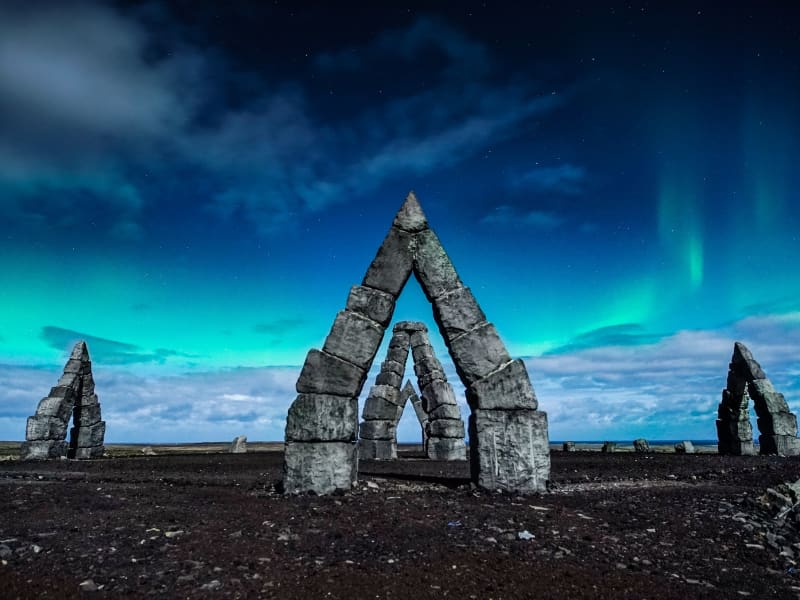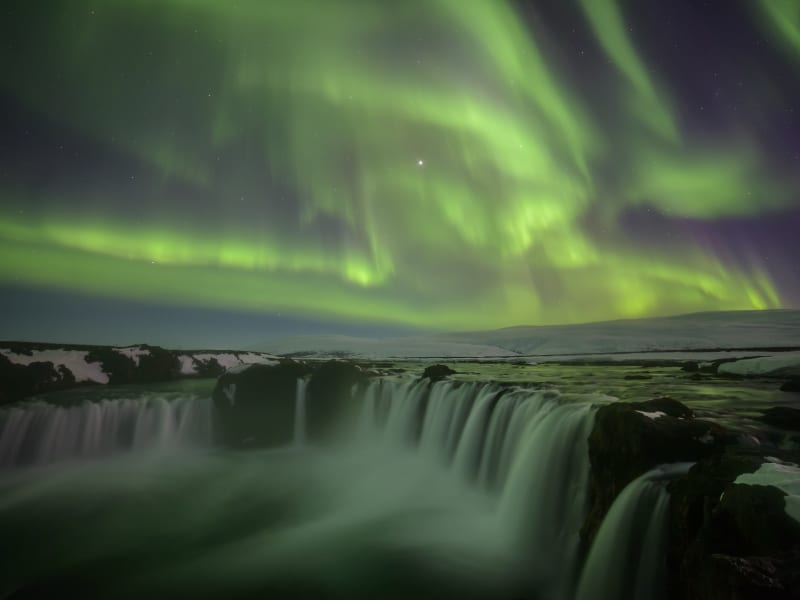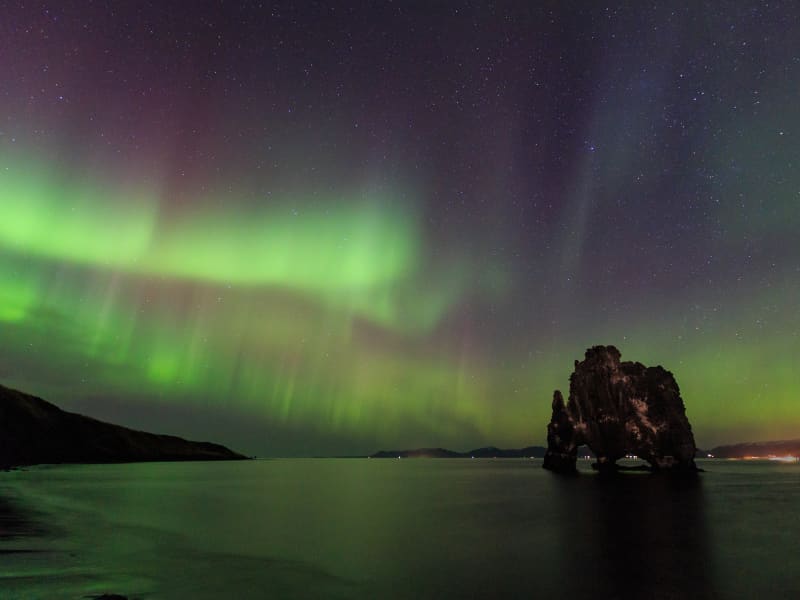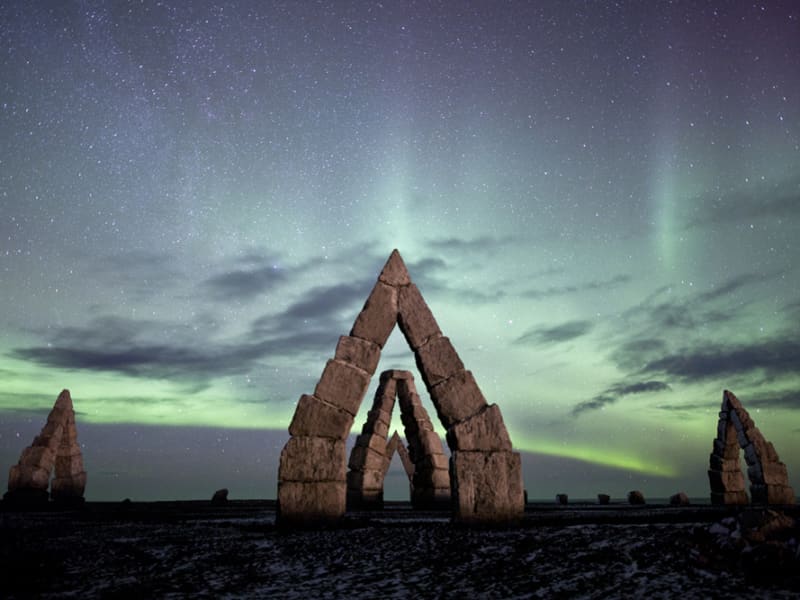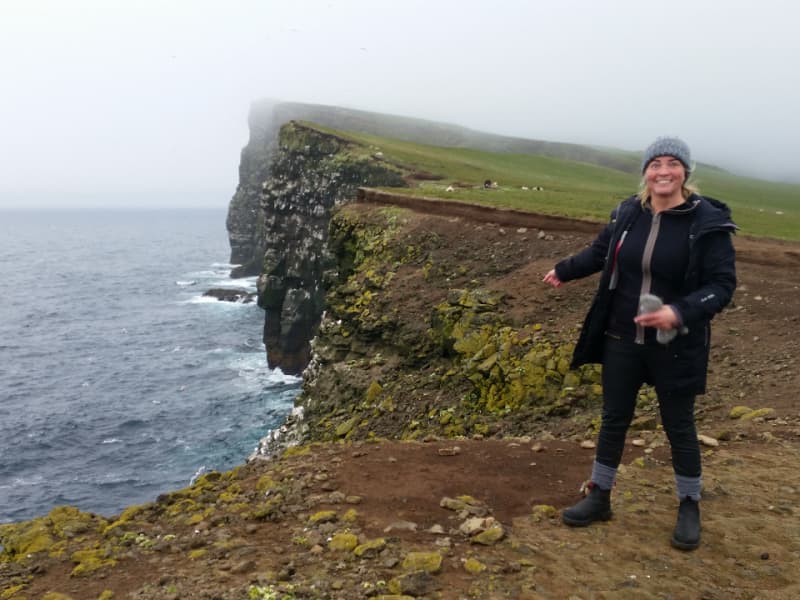Northern Lights can be seen in North Iceland from the end of August to mid- April. Enjoy the clear skies by simply looking upwards towards those dancing, flickering veils of light in green, white or red, or take a guided northern lights tour to excellent observation and photography locations. These tours can include a visit to geothermal bathing areas, evening boat tours, snow cat tours or sightseeing in unique locations. The chances of seeing the Northern Lights are 66% during a three nights stay in North Iceland, and 90% for a five nights stay.
The Northern Lights – also called Aurora Borealis – are among the most spectacular shows on earth, frequently seen in North Iceland and its surroundings on clear and crisp nights. The Northern Lights occur high above the surface of the earth where the atmosphere has become extremely thin, at an altitude of 100-250 km. This phenomenon occurs in the outermost layer of the atmosphere, created by electrically charged particles that make the thin air shine, not unlike a fluorescent light. The Northern Lights can be seen in aurora belts that form 20-25 degrees around the geomagnetic poles, both in the north and the south.
What causes this spectacular phenomenon, so characteristic of our Northern Lights here in Iceland? Well, electricity is the answer — and of course it all goes back to the sun. Tiny particles, protons and electrons caused by electronic storms on the sun (solar wind) are trapped in the earth’s magnetic field where they begin to spiral back and forth along the magnetic lines of force – circle around the magnetic pole, so to speak. While rushing around endlessly in their magnetic trap, some particles escape into the earth’s atmosphere where they begin to hit molecules and these impacts cause the molecules to glow, thus creating the auroras.
White and green are usually the dominant hues but sometimes there are considerable colour variations, as the pressure and composition of the atmosphere varies at different altitudes. At extremely high altitudes where the pressure is low, there tends to be a reddish glow produced by oxygen molecules when they are struck by the tiny particles of the solar wind. At lower altitudes, where there is higher pressure, the impact-irritated oxygen molecules may glow with a greenish tinge and sometimes there is a reddish lower border created by particles colliding with nitrogen molecules in the immediate vicinity.
The phenomenon is easily explained by modern science. What our ancestors may have thought when they gazed into the brightly-lit winter sky is quite another matter. But by all means don’t let any scientific explanation spoil your appreciation of the beauty of the Northern Lights. They are a truly impressive spectacle, whatever their cause.

